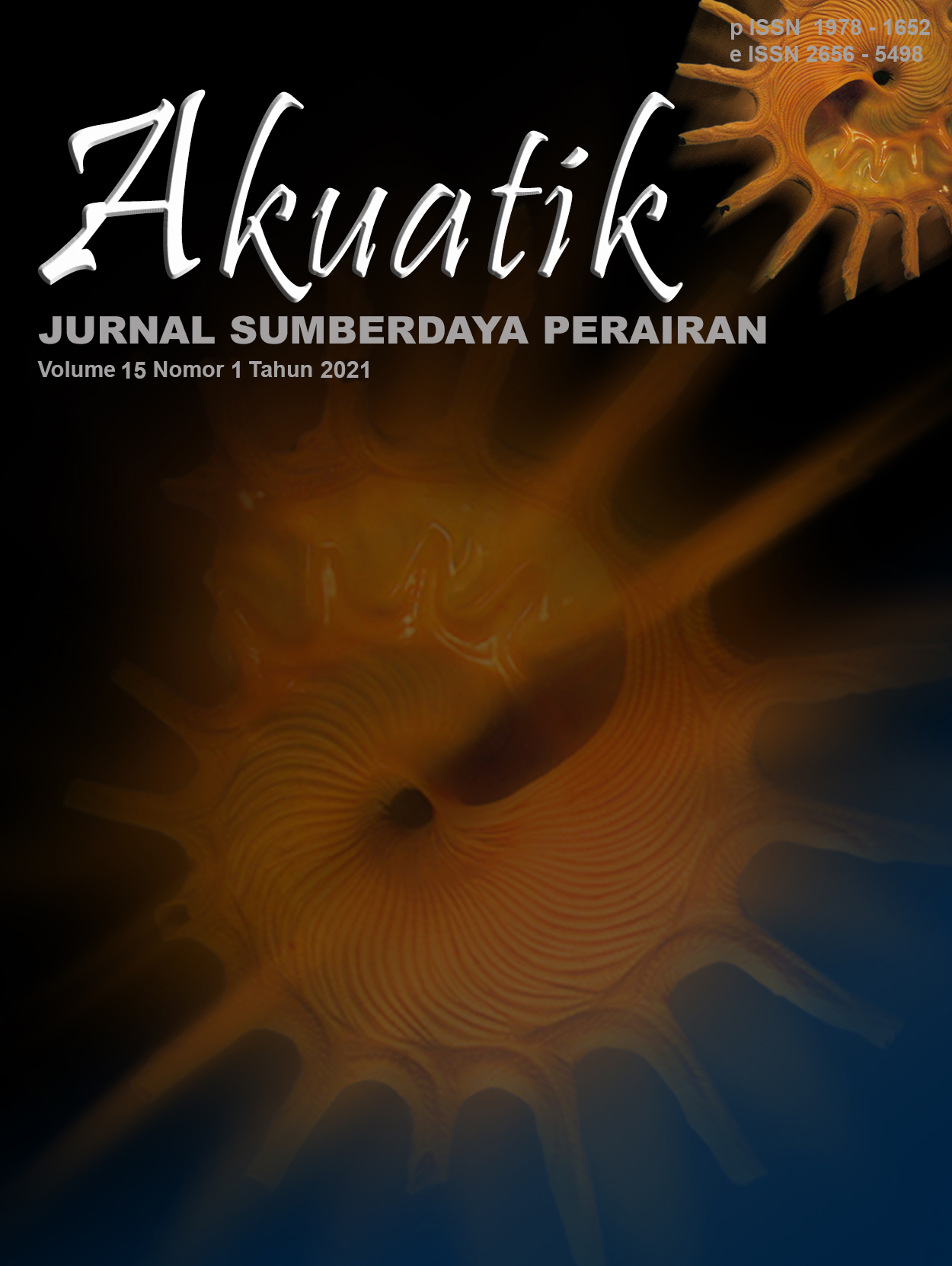Kesesuaian dan Daya Dukung Wisata Selam Berdasarkan Ekosistem Terumbu Karang di Pulau Kelapan Kabupaten Bangka Selatan.
Suitability and Carrying Capacity of Diving Tourism Based on Coral Reef Ecosystems on Kelapan Island, South Bangka Regency.
DOI:
https://doi.org/10.33019/akuatik.v15i1.3106Keywords:
Suitability, Carrying Capacity,Kelapan Island, Diving TourismAbstract
Kelapan Island has a natural resource potential, namely coral reef ecosystems. The high potential of coral reefs on
Kelapan Island can be utilized for diving tourism activities. Therefore, the aims of this study areto provide information
on the level of suitability of diving tourism and the carrying capacity of the area on Kelapan Island, South Bangka
Regency for marine tourism activities in the diving tourism category. The study was conducted in September 2020 on
Kelapan Island, South Bangka Regency.The data of coral reef were collected using the Line Intercept Transect (LIT)
method while the data of coral reef fish were collected using the roaming method (timed swim). The results of the
calculation of the Diving Tourism Suitability Index at eight research stations on Kelapan Island are categorized into the
appropriate category (S2). The percentage of tourism suitability index for station 1 is 77.78%, station 2 is 96.3%, station
3 is 77.78%, station 4 is 70.37%, station 5 is 72.22%, station 6 is 70.37%, station 7 is 90.74%, and station 8 is 96.35%.
The area of the coral reefs use for diving tourism activities on Kelapan Island is 179,151 m² with the carrying capacity
of the area that can accommodate 717 visitors (persons/day).
Downloads
Downloads
Published
Issue
Section
License
Under this license, others are permitted to share (copy and redistribute the material in any medium or format) and adapt (remix, transform, and build upon the material) for any purpose, including commercial use. Appropriate credit must be given to the original authors, a link to the license must be provided, and any modifications or derivative works must be distributed under the same license. This condition ensures that the original work and all derived content remain openly accessible under identical terms.








